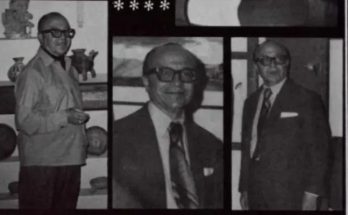By Luis Felipe Rodriguez
The patrons who promoted the great works of art in the early centuries of San Miguel de Allende are no more. In 1921, though, a new interest for art arose with the opening of an arts and crafts school. According to Luis Caballero, it was located on the corner of San Francisco and Relox, in a building known as La Princesa. It had originally been a store owned by the Landeta family, and was looted by the nascent insurgent army on the night of September 16, 1810.
The school was located on the upper stories, and was coordinated by Esteban Wario Hernández (1895-1983), a teacher from Lagos, Jalisco. Teachers offered a variety of art classes. One notable teacher was Alberto Díaz Figueroa, who taught drawing, painting, and sculpture. His students included José María (Chema) Hernández, Antonio Domínguez, Miguel Licea Sautto, and Luis Caballero.
Díaz himself was an accomplished sculptor. Among his best-known works are the Adoration Angels. For many years these sculptures were housed in the parish of San Miguel; later they were transferred to Señor Ecce Homo’s chamber changing room.
Some years later, the arts and crafts school was moved to Hidalgo 4. This house was owned by Mariquita López, sister of the priest José López Escobedo (who later donated this building to the Regina María Adorers . Díaz was replaced by Antonio Domínguez.
In addition to the visual arts, there were music classes under Benjamín Vidargas. His students included José María Hernández, Arnulfo Muñoz, Guayo and Gabriel Vidargas, and Cuco Sánchez. Later, Genaro Ramírez took over as director; he founded the Rioma Orchestra and was a member of the Municipal Band.
Around 1913, Práxedes Almanaza became interested in sculpture, but it was his son, Donato, who apprenticed in the art and brought fame to his family for his santeros—sculptured images of saints. The family home, which they inherited from maternal aunts Clemencia and Micaela, became a teaching center and workshop. Eventually, Donato built a sculpture workshop in his house on Jesús. He shared his knowledge of the art with his children Genaro, Francisco, Jesús, Lauro, Antonia, and Reynaldo, as well as with other young people. All his children continued the art.
*Information for this article comes from the book, “Los Sanmiguelenses Imagineros,” by Luis Felipe Rodríguez, city´s chronicler. Here is part 2.




